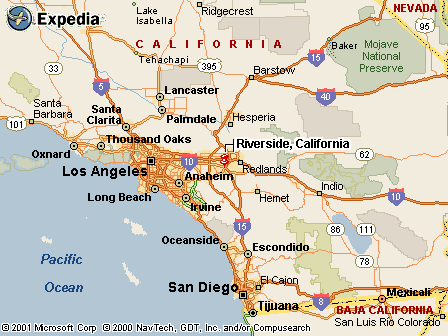|
|
Canku Ota |
|
|
(Many Paths) |
||
|
An Online Newsletter Celebrating Native America |
||
|
October 20, 2001 - Issue 47 |
||
|
|
||
|
Indian School Celebrates Future |
||
|
by David Danelski-The Press-Enterprise-October 14, 2001 |
||
|
Terry Goedel, a Yakima Indian, performs a hoop dance at Sherman Indian High
School. |
 RIVERSIDE -
It was a bittersweet celebration: A troubled past remembered and a bright future envisioned. Sherman Indian High
School marked its 100-year anniversary Saturday with speeches and American Indian songs, dances and prayers. There
was also the dedication of a rose garden and time capsule. RIVERSIDE -
It was a bittersweet celebration: A troubled past remembered and a bright future envisioned. Sherman Indian High
School marked its 100-year anniversary Saturday with speeches and American Indian songs, dances and prayers. There
was also the dedication of a rose garden and time capsule. There was a mix of American Indian cultures that emanated from all corners of the Riverside boarding school that serves students from around the nation. Traditional dancing was going on in the auditorium. Murals displayed the artistic images of numerous tribes. Students could take a class on bead work. And there was the ceremonial burning of tobacco and other religious ceremonies. All this happened at a school built a century ago that once had a mission to strip Indian youth of their culture. Several speakers described how the use of native languages was once forbidden. One recalled that his mother told him how those caught speaking an Indian language in the 1930s would have their mouths washed out with soap. Hair had to be cut short. And all students were forced to march around the campus in military fashion. "Cultural ways were lost and many languages were forgotten," said keynote speaker Fayetta Babby, an education programs administrator for the regional Bureau of Indian Affairs Office that oversees the high school. "The legacy of the trauma inflicted at the boarding schools is still in the hearts of many of you. We are past those terrible times," she said. Now, Indian culture flourishes as about 600 students pursue a curriculum that meets California education standards, she said. For Claressa Whiteskunk, 16, a member of the Cheyenne tribe from Concho, Okla., the school allows her to prepare for college in a supportive environment. "I learned a lot about other Native American tribes," she said. "I didn't know there were so many." Phillip R. Quochytewa Sr., a class of 1967 Sherman alumnus and now vice chairman of the Hopi tribe in Kykotsmovi, Ariz., said he had to sneak behind buildings to speak his native language when he came to the school in the early 1960s. But changes for the better slowly started later in that decade when "people started taking about their rights," he said. Instilling a sense of cultural identity makes for a stronger, well-grounded person, he said. "If you have a cultural identity, you can survive anywhere," he said. Before the rose garden and a time capsule were officially dedicated, the Star Spangled Banner was sung to the beat of a leather drum. The U.S. flag was raised to half-staff in observance of the Sept. 11 terrorist attacks. Quochytewa, a Vietnam veteran, said Sherman students have answered the nation's call to serve in World War I, World War II, Korea and Vietnam. He now expects Sherman students to do their part in the new war against terrorism. |
|
|
|
|
||
|
|
||
| Canku Ota is a free Newsletter celebrating Native America, its traditions and accomplishments . We do not provide subscriber or visitor names to anyone. Some articles presented in Canku Ota may contain copyright material. We have received appropriate permissions for republishing any articles. Material appearing here is distributed without profit or monetary gain to those who have expressed an interest. This is in accordance with Title 17 U.S.C. section 107. | ||
|
Canku Ota is a copyright © 2000, 2001 of Vicki Lockard and Paul Barry. |
||
|
|
|
|
|
The "Canku Ota - A Newsletter Celebrating Native America" web site and its design is the |
||
|
Copyright © 1999, 2000, 2001 of Paul C. Barry. |
||
|
All Rights Reserved. |
||

